CXCL14 is an autocrine growth factor for fibroblasts and acts as a multi-modal stimulator of prostate tumor growth
- PMID: 19218429
- PMCID: PMC2651265
- DOI: 10.1073/pnas.0813144106
CXCL14 is an autocrine growth factor for fibroblasts and acts as a multi-modal stimulator of prostate tumor growth
Abstract
This study explored the role of secreted fibroblast-derived factors in prostate cancer growth. Analyses of matched normal and tumor tissue revealed up-regulation of CXCL14 in cancer-associated fibroblasts of a majority of prostate cancer. Fibroblasts over-expressing CXCL14 promoted the growth of prostate cancer xenografts, and increased tumor angiogenesis and macrophage infiltration. Mechanistic studies demonstrated that autocrine CXCL14-stimulation of fibroblasts stimulate migration and ERK-dependent proliferation of fibroblasts. CXCL14-stimulation of monocyte migration was also demonstrated. Furthermore, CXCL14-producing fibroblasts, but not recombinant CXCL14, enhanced in vitro proliferation and migration of prostate cancer cells and in vivo angiogenesis. These studies thus identify CXCL14 as a novel autocrine stimulator of fibroblast growth and migration, with multi-modal tumor-stimulatory activities. In more general terms, our findings suggest autocrine stimulation of fibroblasts as a previously unrecognized mechanism for chemokine-mediated stimulation of tumor growth, and suggest a novel mechanism whereby cancer-associated fibroblasts achieve their pro-tumorigenic phenotype.
Conflict of interest statement
The authors declare no conflict of interest.
Figures
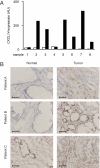
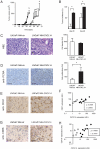
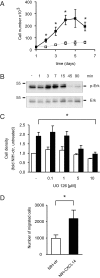
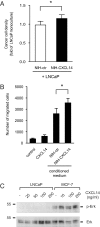
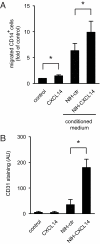
References
-
- Balkwill F. Cancer and the chemokine network. Nat Rev Cancer. 2004;4:540–550. - PubMed
-
- Johrer K, et al. Tumour-immune cell interactions modulated by chemokines. Expert Opin Biol Ther. 2008;8:269–290. - PubMed
-
- Strieter RM, et al. Cancer CXC chemokine networks and tumour angiogenesis. Eur J Cancer. 2006;42:768–778. - PubMed
-
- Balabanian K, et al. The chemokine SDF-1/CXCL12 binds to and signals through the orphan receptor RDC1 in T lymphocytes. J Biol Chem. 2005;280:35760–35766. - PubMed
Publication types
MeSH terms
Substances
LinkOut - more resources
Full Text Sources
Medical
Miscellaneous

